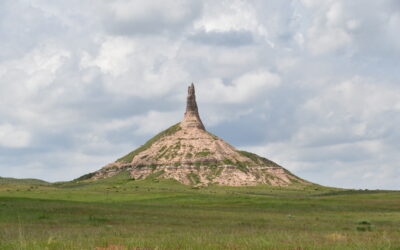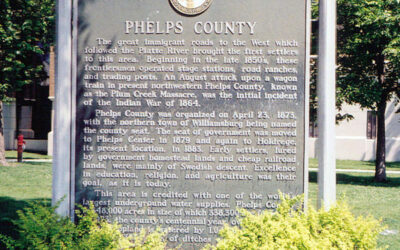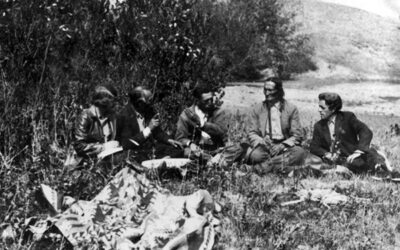For several years bank crises, national economic depression, and environmental calamity descended on Dawes County.
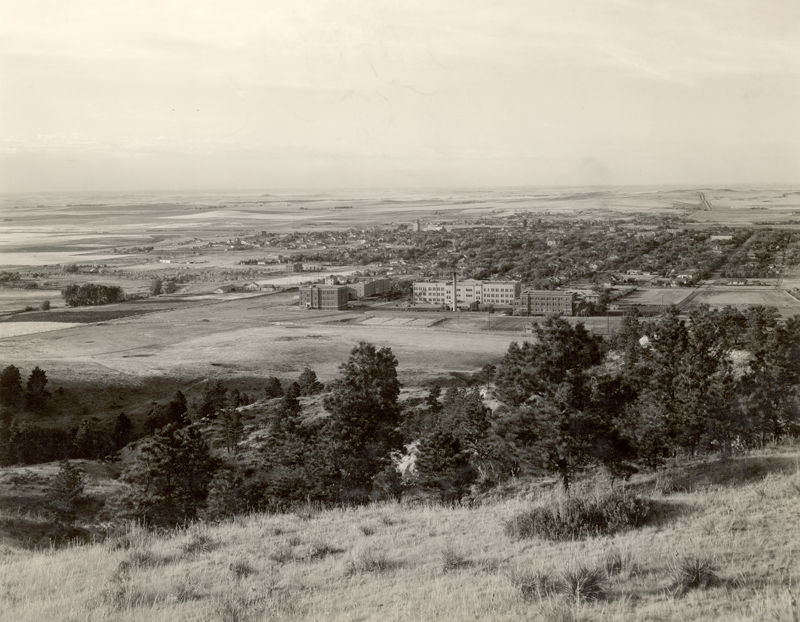
(“Chadron seen from the south, circa 1932-1938. Chadron State Normal school is visible in the foreground.” RG3340-03-03)
By Breanna Fanta, Editorial Assistant
Chadron experienced an economic and population boom after its founding in 1885. Many western Nebraskans predicted that it would grow to rival Omaha in size.
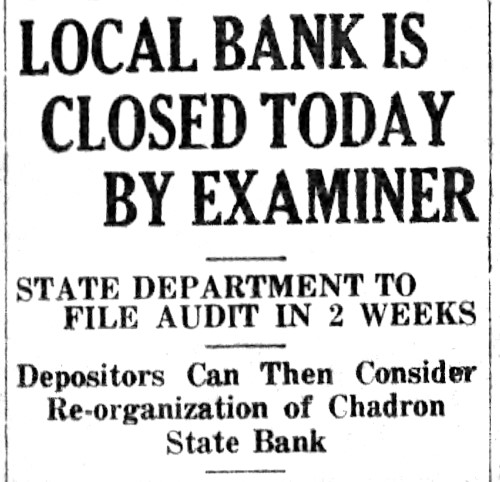 Though it never became a large city, Chadron was a county seat and college town with 4,600 residents by 1930. Over the next several years, bank crises, national economic depression, and environmental calamity descended on Dawes County. Michael Sandstrom details the local response to these hardships in “Travails of the ‘Magic City’: The Great Depression in Dawes County” in Nebraska History Magazine’s Fall 2021 issue.
Though it never became a large city, Chadron was a county seat and college town with 4,600 residents by 1930. Over the next several years, bank crises, national economic depression, and environmental calamity descended on Dawes County. Michael Sandstrom details the local response to these hardships in “Travails of the ‘Magic City’: The Great Depression in Dawes County” in Nebraska History Magazine’s Fall 2021 issue.
Bank closures were a big problem in the early years of the Depression. With only two banks in town, Chadron residents were alarmed when one of them closed suddenly in 1929. Depositors did not know if they would ever get their money back.
(Pictured Left: “Chadron Chronicle, Nov. 28”)
After a meeting that December, the Bank Depositors Committee placed the bank in the hands of a receiver who distributed the remaining assets proportionally to the depositors. Most deposits were eventually repaid, but this and other bank failures across the country harmed public confidence in the banking system.
Residents wondered if the city’s remaining bank, the First National Bank of Chadron, would survive. First National was determined to demonstrate its stability, releasing quarterly reports of its financial condition and launching an aggressive advertising campaign to sway opinions. Two months later, First National reported a record increase in deposits.
Meanwhile, the county’s farmers faced severe drought and dust storms. What rain that fell often came in severe downpours that caused flash flooding.
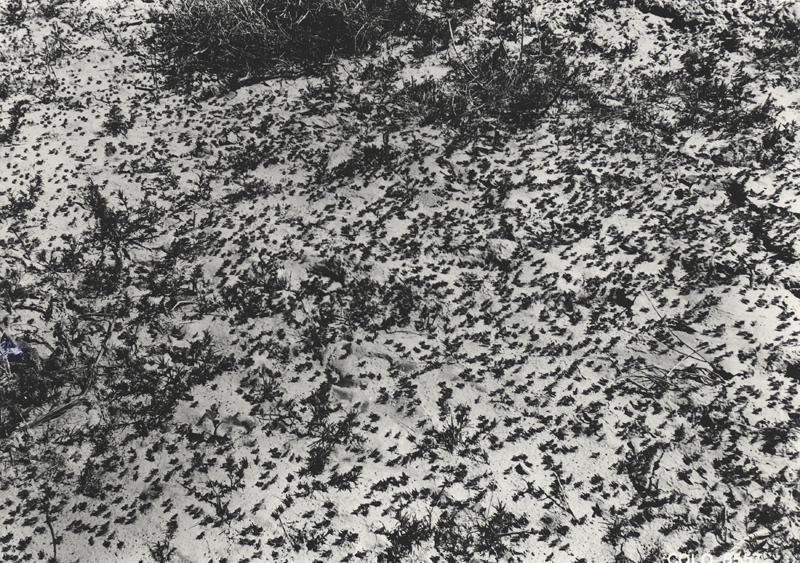
(“Grasshoppers in Cheyenne County, Nebraska, Soil Conservation Service photo.” RG2570-17-14)
And if the weather didn’t destroy crops, insects consumed them. Newspapers extensively covered hordes of grasshoppers invading fields. Early articles suggested farmers scatter poison; by the late 1930s, local newspapers regularly reported news of hatchings and where to find government-provided poison.
From 1929 to 1932, Dawes County Farmers lost a little under $4 million in grain and livestock—roughly the equivalent value of $60 million in 2020.

(“‘Cut-over land abandoned by homesteaders’ in Dawes County. Photo by Arthur Rothstein for the US Farm Security Administration, May 1936.” Library of Congress Prints & Photographs Division)
As the economy took a hit, the community did what they could. The local teacher’s college (today’s Chadron State College) was a big contributor to the area financially. With that in mind, the college built additional dormitories to boost enrollment and in turn help the local economy.
But foreclosures, business failures, and unemployment rates continued to climb in the early 1930s.
An official unemployment rate is not available, but the number of unemployed workers equaled 10 percent of Chadron’s 1930 population—including children and elderly people who would be working anyway. The unemployment rate must have been much higher than 10 percent.
Residents requested additional civic relief charity, and community fundraisers for the unemployed and dispossessed became more frequent.
As residents supported Chadron’s relief associations, they also contributed resources to other areas in need by delivering train cars full of wheat and other goods to southern Great Plains areas.
Chadron eventually needed assistance of its own, and on April 22, 1932, a local paper announced the arrival of the first train car from the American Red Cross.
Chadron’s economic relief organizations were soon stretched thin. Despite the diligence of Chadron residents, local relief efforts were insufficient. In 1932 Dawes County joined much of the rest of the country in voting for Franklin Delano Roosevelt, who promised a “New Deal” for the American people. A forthcoming article by Michael Sandstrom will look at how the New Deal programs reshaped Chadron and Dawes County.
The entire article can be found in the Fall 2021 edition of the Nebraska History Magazine. Members receive four issues per year.
Categories:
Great Depression, Dawes County, Chadron

